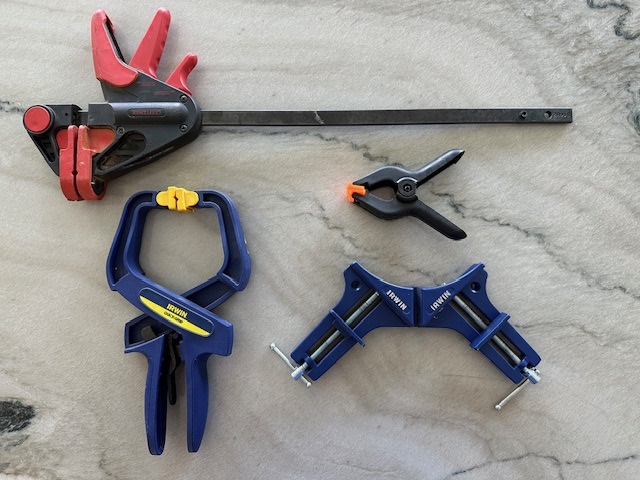Clamps are essential tools used in various DIY projects to hold objects firmly in place. They come in a wide range of shapes and sizes, designed to accommodate different materials and applications. A clamp ensures that workpieces remain secure and stable, allowing for precise cutting, gluing, fastening, or assembly.
History
The history of clamps dates back to ancient times when early craftsmen used rudimentary devices to hold materials together. The evolution of clamps has seen significant advancements, particularly during the Industrial Revolution, which introduced more sophisticated and specialized designs. Today, clamps are an indispensable part of any workshop, with numerous types available to meet specific needs.
Types of Clamps
- C-Clamps: Versatile and commonly used for woodworking and metalworking.
- Bar Clamps: Ideal for large projects requiring a wide clamping area.
- Pipe Clamps: Adjustable and perfect for clamping wide panels.
- Spring Clamps: Quick and easy to use for light-duty tasks.
- Corner Clamps: Designed for holding workpieces at right angles.
- F-Clamps: Similar to bar clamps but with a sliding arm for quick adjustments.
- Bench Clamps: Mounted on workbenches for holding materials securely during operations.
- Toggle Clamps: Provide a strong, quick-release hold for repetitive tasks.
Clamp Key Features
- Material: Clamps are typically made from metal, plastic, or a combination of both for durability and strength.
- Adjustability: Many clamps feature adjustable arms or jaws to accommodate various sizes of workpieces.
- Clamping Pressure: The ability to apply the right amount of pressure is crucial for ensuring a secure hold without damaging the material.
- Grip: Ergonomic handles or grips for ease of use and comfort.
- Mechanism: Different locking and tightening mechanisms to suit specific tasks.
Choosing the Right Clamp
When selecting a clamp, consider the type of project and the materials involved. For heavy-duty tasks, opt for sturdy metal clamps with high clamping pressure. For delicate work, choose clamps with padded jaws to prevent damage. The size and adjustability of the clamp should match the dimensions of the workpieces you’ll be working with. Additionally, consider the ease of use and ergonomics to ensure comfort during extended use.
Clamp Recommendations
- IRWIN Quick-Grip Mini Bar Clamp, 4 Pack
- HORUSDY 6-Piece, 6 inch Spring Clamp
- IRWIN Tools Quick-Grip Light Duty Corner Clamp
- Jourgensen 2-pack, Medium Duty Steel Bar Clamp
Proper Use and Techniques
To use clamps effectively, always ensure that the surfaces of the workpieces are clean and free from debris. Position the clamp so that it applies even pressure across the entire surface. For gluing, allow adequate drying time before removing the clamp to ensure a strong bond. When working with multiple clamps, distribute them evenly to avoid warping or misalignment.
Maintenance and Care
Regular maintenance of clamps ensures their longevity and performance. Clean the clamps after each use to remove any adhesive or debris. Lubricate the moving parts periodically to keep them operating smoothly. Inspect the clamps for signs of wear or damage and replace any worn-out parts to maintain their effectiveness.
Safety Tips
When using clamps, always follow safety guidelines to prevent accidents and injuries. Wear appropriate safety gear, such as gloves and eye protection. Ensure that the clamps are securely fastened and do not over-tighten them, as this can damage the workpieces. Keep your hands and fingers clear of the clamping area to avoid pinching or crushing injuries.
Conclusion
Clamps are versatile and indispensable tools in any DIY enthusiast’s toolkit. By understanding the different types, features, and proper usage techniques, you can choose the right clamp for your projects and ensure safe and efficient work. Regular maintenance and adherence to safety tips will extend the life of your clamps and enhance your overall DIY experience.


